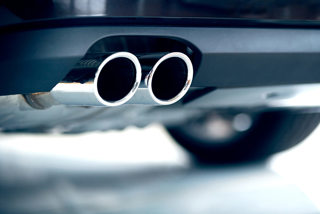New company car tax rates, announced in the Budget, will cost the Government £100 million in lost revenue over the next two years, while drivers will face higher costs from new emissions regime.
The publication of a new zero benefit-in-kind (BIK) tax rate for EVs, funding for a network of fast charge points and extending the plug-in grant were part of package of measures aimed at incentivising ultra-low emission vehicles (ULEVs), delivered in a Budget dominated by the coronavirus crisis.
Policymakers believe the hit to Treasury coffers is a price worth paying to help the fleet industry spearhead the uptake in electric vehicles (EVs) and put the UK firmly on the ‘Road to Zero’.
And, considering the unprecedented financial intervention by the Chancellor to mitigate the coronavirus crisis since the Budget, £100m in lost revenue will now seem like small fry.
The Chancellor, Rishi Sunak, has announced a series of financial measures to help businesses and employees get through the crisis, running into hundreds of billions of pounds.
What is clear, according to Paul Hollick, co-chair of fleet training and representative body the Association of Fleet Professionals (AFP), is the virus will have “ramifications for our industry for years to come”.
BIK COMPARISONS
Analysis of the new company car tax rates by Fleet News shows the obvious appeal of running an EV as a company car.
The annual BIK cost to a company car driver for a Kia E-Niro registered before April 6 was £1,214 in 2019/20, but this falls to zero in 2020/21, £76 the following year and then £152 for the next three tax years up to and including 2024/25.
The amount of company car tax paid year-on-year for the E-Niro, registered after April 6, will be exactly the same as that prior to that registered prior to April 6.
However, new company car rates do show large differences in the amount of BIK tax paid for some cars registered before and after April 6, which were first highlighted by Fleet News, last year.
Company car drivers choosing an Audi A4 TDI 35, for example, will be paying £2,378 in BIK in 2020/21, if registered after April 6 – almost £500 more for the same car registered before that date.
The gap continues to widen over the next four years, with the Audi driver paying £750 more in 2024/25 despite the new tax table aiming to soften the blow of higher CO2 values from the new vehicle testing regime - the Worldwide harmonised Light vehicle Test Procedure (WLTP).
Furthermore, the lack of an RDE2-compliant engine in the Audi A4 pushes its rates even higher, because it attracts the 4% diesel differential.
INCREASE IN CO2
A new study from Cap HPI suggests that the average petrol, diesel or hybrid car has seen a 19.7% increase in CO2 under WLTP and BiK increases of £714 a year, while VED has jumped £300.
Average C02 values increased 26 grammes from 135g/km under NEDC to 161g/km under WLTP. The MPV sector saw an increase of 33% followed by large executive, 30% and SUV, 29%. The smallest percentage increase was seen in the supercar sector at just 8%.
The most significant increases in BiK were seen in the MPV sector at 3.5%, upper-medium, 3.3% and supermini, 3.2%. Luxury executive and supercar saw no increases.
Jonathan Clay, head of vehicle identification at Cap HPI, said: “The combination of the introduction of WLTP and a new tax regime aimed at encouraging private drivers and fleets to make greener motoring choices has driven up costs across the board. But it’s also clear that some sectors are more affected than others, which will undoubtedly drive a change in the shape of the UK car parc.”
IMPACT ON VED
WLTP is used for tax purposes for VED from today (April 1) and from April 6 for BIK. Vehicles registered after this date will be taxed using the new WLTP CO2 emissions values. The values will relate to the specific configuration of an individual vehicle, taking optional equipment fitted to the vehicle into account for the first time.
Large executive vehicles saw the most substantial increase in VED at £546, followed by executive, £459, and MPV, £455. City car and supercar saw the smallest increases with £52 and £40, respectively.
On average diesel vehicles saw CO2 increase by 30 grammes while petrol-hybrid vehicle rose by 29.3 grammes. Diesel plug-in hybrids saw CO2 decrease by 1.9 grammes on average.
The petrol hybrid, petrol and diesel sectors all saw increases in BIK of 4.1%, 2.6% and 2.5% respectively. Petrol plug-in hybrid saw a decrease of 5% and diesel plug-in hybrid of 5.5%.
The diesel sector saw the largest increase in VED of £423 on average, followed by petrol, £232, and petrol hybrid, £180. Petrol plug-in hybrid only saw a rise of £6 while diesel plug-in hybrid saw no increase.
Electric vehicles made the biggest economies in BIK with the Porsche Taycan saving over £16,000 and the Tesla Model 3 £8,000. The Kia e-Niro, Hyundai Kona and Nissan Leaf all saw savings of around £6,000.
The data firm has warned that anyone wishing to quote a vehicle with options could see it span different bands; with 49% of models crossing more than one BIK band, and 41% for VED bands.
BIK CLARITY WELCOMED
Nevertheless, the certainty that new company car tax rates has given fleets was welcomed after the Budget, together with their publication for the next five years.
Caroline Sandall, co-chair of the AFP, said: “Company car demand has been hit in recent years by year-on-year increases in BIK tax and long-term rate uncertainty.
“However, the fact that rates are now known for the next five financial years – a full vehicle replacement cycle – gives planning confidence to both fleet decision-makers and company car drivers.”
Ashley Barnett, head of fleet consultancy at Lex Autolease, believes that the Treasury realised Government would not achieve its Road to Zero aims by “beating-up” 900,000-plus company car drivers with tax hikes.
“The issue that we have is 32 million cars and how do we get them cleaner and greener, and the company car market has a huge role to play,” he said.
With Government consulting on plans to end the sale of new petrol, diesel and plug-in hybrid vehicles by 2035 or earlier, as part of its Road to Zero strategy, Sandall also believes now is the right time for fleets to embrace EVs.
She said: “It is imperative that fleet decision-makers and company car drivers focus on moving towards operating and driving 100% electric vehicles.”
DELAYED BY BREXIT
The fleet industry has been waiting for the new BIK rates to be officially adopted since July 2019, when Treasury published how it intended to change them to counter the impact of WLTP.
The new company car tax rates were expected to be rubber-stamped in the Autumn Budget, ahead of coming into force from April. However, continuing deadlock over Brexit put the new BIK rates and the required legislation on hold, after the Government decided to go to the polls.
The fleet and leasing industry was therefore relieved that the Budget confirmed the new rates and they will now be adopted into law.
Claire Evans, head of fleet consultancy at Zenith, said: “The fleet industry will take real confidence from the confirmation of BIK tax rates and the further announcement they will be frozen at 2022/23 levels for an additional two years.
“It gives the industry the certainty it needs and provides a commitment to low rates for drivers of EVs.”
For cars first registered from April 6, 2020, most company car tax rates will be reduced by two percentage points, with a new zero percentage rate for pure electric vehicles.
The percentages will then be increased by one percentage point for each of the tax years 2021 to 2022 and 2022 to 2023.
In the tax year 2022 to 2023, the increase will bring the percentages back to their published rates in existing legislation. (Full tables are available here).
The measure includes changes to the appropriate percentage figures for all cars classified as being zero-emission vehicles under both the NEDC and WLTP test procedures.
The appropriate percentage will be reduced to 0% for the tax year 2020 to 2021 and will be increased by one percentage point for the tax years 2021 to 2022 (to 1%) and 2022 to 2023 (to 2%).
In the tax year 2022 to 2023, the increase will bring the appropriate percentage back to their published rates in existing legislation which will be sustained throughout the tax years 2023 to 2024 and 2024 to 2025.
For cars registered between 1 October 1999 and 5 April 2020 inclusive, the measure clarifies that the CO2 emissions figures for company car tax and related charges will continue to be based under the NEDC test.
Leasing companies have already reported seeing an increase in EV adoption rates. Zenith has seen orders of EVs leap more than 300% in salary sacrifice fleets and 250% in its company car fleets over the past six months, as drivers and fleet managers transition to electric cars.
ELECTRIC VAN FLEETS
Zero emission light commercial vehicles (LCVs) were also given a much-needed boost in the Budget.
From April 2021, the Government will apply a zero rate of tax to zero emission vans within van benefit charge, saving businesses an estimated £433 per van in tax in 2021-22.
Russ Boulton, ALD LCV consultant, said: “This is a sensible and much needed approach from the Government to further encourage the
adoption of EVs as it lowers total cost of ownership and coincides with manufacturers releasing a greater amount of electric van models.
“The approach will also directly impact the electric van driver, further enhancing the proposition to change to an electric van where possible.”
Meanwhile, new research from Centrica Business Solutions has highlighted the potential scale of future EV adoption. It found investment in EVs will increase by almost 50% over the next two years, exceeding £12 billion (fleetnews.co.uk, March 10).
It surveyed businesses about their EV investment intentions and found many are planning to significantly ramp-up spending on the electrification of their fleet.
The data revealed that in the past two years, businesses have spent an estimated £8.2bn on EV adoption. However, it shows over the next two years, this level of investment is set to increase by almost half (46%) – to £12bn – as firms accelerate the introduction of electric cars and vans into day-to-day operations.
UK firms plan to spend an average of 4.5% of annual turnover on EV adoption over the next two years according to the data, with more than a quarter (27%) of respondents expecting at least a fifth of the vehicles within their fleet to be electric by 2022.
TAX BENEFITS
The appeal of an electric company car is now considerable, according to Michael Woodward, UK automotive lead at Deloitte.
He told Fleet News an employee could experience savings of around 95% by choosing an EV as their next company car, over a comparable diesel vehicle.
He said the BIK rate announcement put businesses in a “unique position to enable and accelerate the move to electric vehicles”.
Woodward added: “The success of this scheme in replacing higher emission petrol and diesel vehicles on our roads could be a big step towards achieving net-zero targets.”
However, he acknowledged there is still a lot of work to be done to maximise the scheme’s impact.
He explained: “In order to take advantage of the new tax scheme, businesses will need to resurrect company car schemes or think beyond their standard approach to company cars.
“Similarly, manufacturers will be under pressure to manage supply and we will need to see an improvement in the UK’s charging infrastructure.”
Edwin Kemp, associate director Mobility 2030 at KPMG UK, gives his take on Budget 2020, click here.
























Felix Schmidt - 01/04/2020 17:05
Great article! Thanks for the insights!